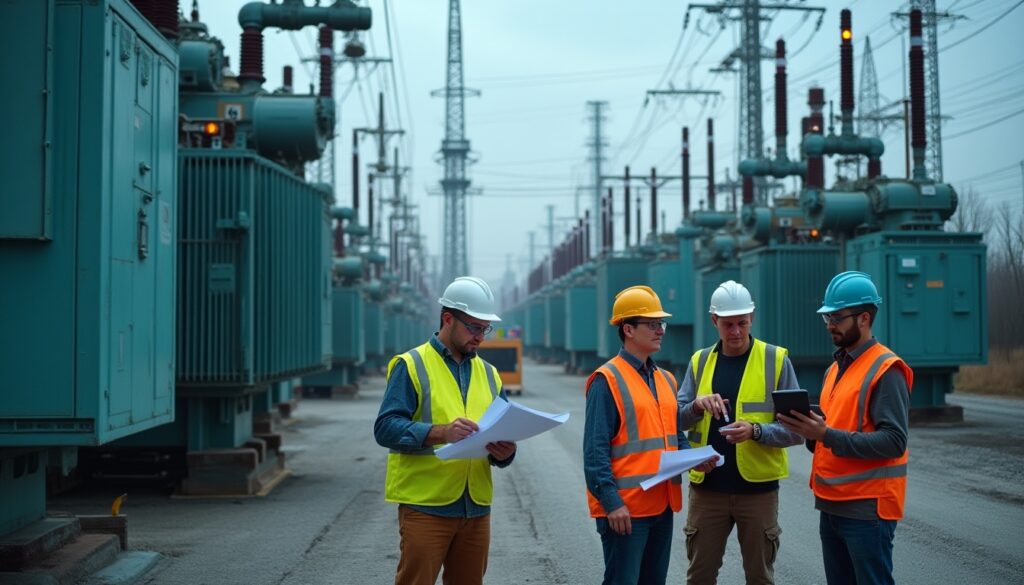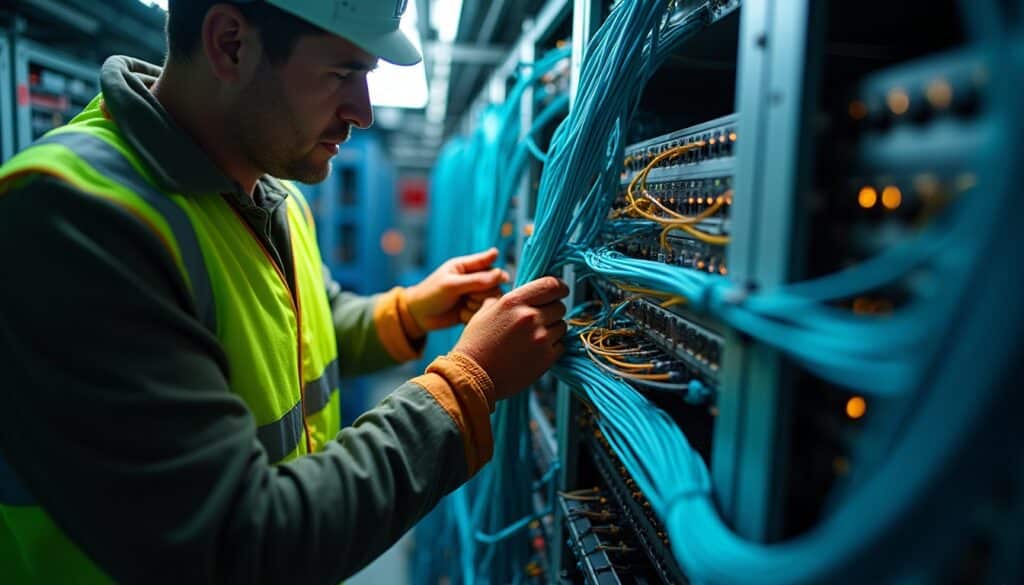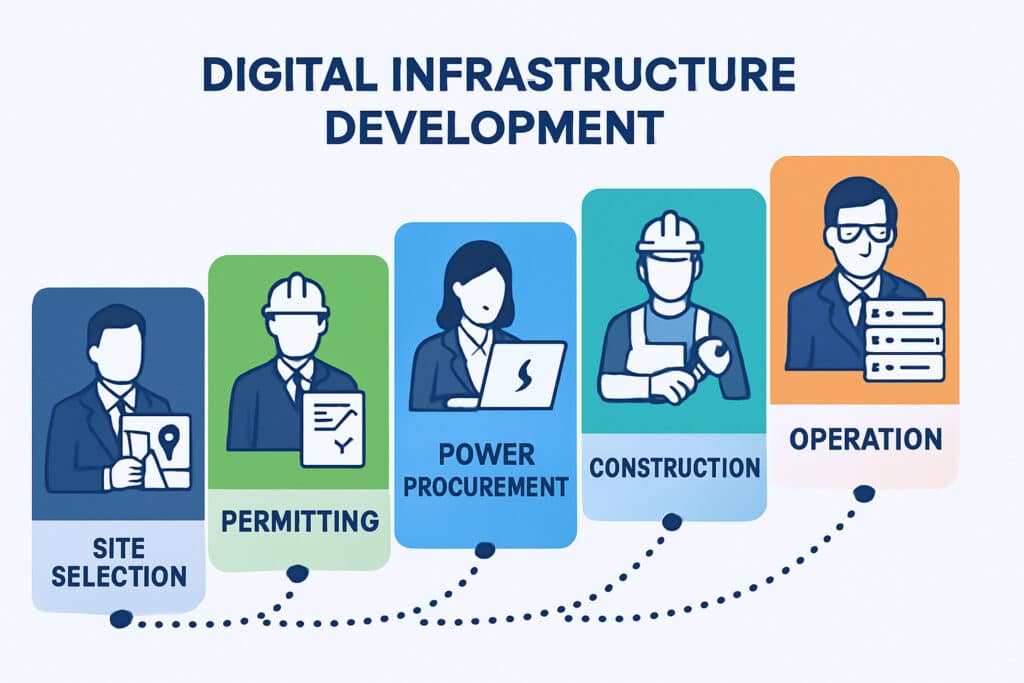As technology transforms every facet of business, from how we store data to how we power operations, the choice of a digital infrastructure provider has never been more critical. Whether you’re a hyperscaler building AI workloads, a colocation developer managing global facilities, or an enterprise looking to secure sustainable energy for your cloud-based future, your infrastructure partner will define how quickly, securely, and efficiently you scale.
But what exactly does a digital infrastructure provider offer? And how do you find one that aligns with both your performance goals and long-term strategy?
This article breaks down the role of today’s infrastructure partners, how market conditions are changing provider expectations, and what to look for when choosing among top digital infrastructure companies.
What a Digital Infrastructure Provider Really Does Today
Gone are the days when digital infrastructure was just servers and storage in a data center. The modern digital infrastructure provider is a hybrid operator, integrating power, land, networking, and sustainability into a single, scalable solution.
A digital infrastructure provider offers:
- Site selection and readiness: Securing land with proper zoning, environmental permitting, water access, and long-haul fiber.
- Power procurement and delivery: Sourcing gigawatt-scale electricity from both the grid and renewable sources, often directly developing power assets.
- Scalable campus infrastructure: Building and maintaining energy-ready campuses for hyperscalers and other high-load users.
- Long-term leasing and development partnerships: Offering built-to-suit options or long-term leases that allow clients to avoid the overhead of site development.
What sets top-tier digital infrastructure providers apart is their ability to align all of these components at speed, with credibility, and at scale.
They’re also increasingly stepping into a consulting role, guiding clients through energy procurement negotiations, sustainability strategies, and redundancy planning. This full-spectrum approach transforms digital infrastructure companies into strategic partners who deeply comprehend the business-critical role infrastructure serves in modern operations.

The Rising Demands on Digital Infrastructure Companies
The stakes for infrastructure development have never been higher. Data center demand is skyrocketing due to next-gen AI, content delivery, cloud migration, and edge computing. But the real bottleneck isn’t land—it’s power.
According to a 2024 report by the U.S. Department of Energy and Lawrence Berkeley National Laboratory, U.S. data centers consumed 176 TWh of electricity in 2023, accounting for 4.4% of total U.S. electricity use. That number is expected to surge to between 325 and 580 TWh by 2028, representing up to 12% of national electricity demand. This explosive growth, driven largely by AI and high-performance computing, reinforces why energy strategy is now the defining metric of a capable infrastructure partner.
This creates three urgent needs:
- Power-first development: Infrastructure that starts with energy sourcing, whether through renewable PPAs, natural gas peaker plants, or hybrid solutions.
- Permitting and interconnection expertise: Knowledge of grid planning, energy regulation, and the often years-long queue for interconnection approval.
- Speed-to-value: The ability to secure, entitle, and prepare land in months—not years—with build-ready timelines that match tech deployment cycles.
Additionally, sustainability pressures and investor expectations are forcing enterprises to look for infrastructure partners who can deliver not just performance, but carbon-conscious solutions. ESG reporting requirements now extend to infrastructure assets, making traceable, transparent energy sourcing more important than ever.
A strong digital infrastructure provider doesn’t just build. They remove friction, eliminate speculation, and deliver with certainty.
How to Evaluate a Digital Infrastructure Provider
Not all infrastructure partners are created equal. In a saturated field where smaller developers are often land flippers or brokers, credibility and capability are everything. Whether you’re investing in a long-term lease or ready to purchase, these are the key factors to evaluate:
Financial Backing & Ownership Structure
Look for providers backed by Fortune 500 or major energy players with proven access to capital. The best digital infrastructure providers have direct ties to manufacturers, energy assets, and global financial institutions, allowing them to fund large-scale builds without third-party dependence.
Integrated Energy Strategy
A quality partner will offer more than grid power. They’ll integrate renewable energy (solar, wind, or hydrogen), natural gas if applicable, and retail energy channels to balance cost and availability.
Build-Ready Sites
Ask if the land is owned or under contract, zoned, entitled, and located near power substations, water pipelines, and fiber corridors. Look for detailed documentation of water sourcing, disposal options, and interconnection queue status.
Track Record and Talent
Is the leadership made up of former hyperscaler or utility developers? Do they have a track record of gigawatt-scale projects in development or operation? Avoid developers who outsource everything. Internal capability equals faster execution.
Customization and Lease Flexibility
Many enterprise customers want to lease land for 10–15 years with the option to purchase. Your provider should offer flexibility and transparency in structuring agreements to match your long-term business strategy.
You should also consider the provider’s digital maturity. Do they offer real-time monitoring of infrastructure performance? Can they deliver insights that help you optimize energy usage or load balancing? Providers who embed intelligence and automation into their campuses offer more than physical assets—they deliver smarter operations.
The Essential Components of a Future-Ready Site
Digital infrastructure development doesn’t stop at securing land. The best providers manage a complex array of site readiness factors that ensure seamless buildout and scalability.
Before committing to a location, verify the provider has addressed:
- Power: Grid access, renewable energy integration, onsite backup power, and interconnection progress
- Water: Potable and industrial water sourcing, groundwater options, and disposal infrastructure
- Fiber: Dark and lit fiber availability, multiple carrier access, and redundancy options
- Natural Gas (if applicable): Permits and infrastructure to support supplemental energy strategies
- Tax Incentives: Local, state, or federal programs that reduce long-term OpEx
These elements impact both the build timeline and total cost of ownership, making them non-negotiable for high-performance campuses.

Strategic Location Selection: The Power-First Approach
Location selection goes beyond geography. Leading digital infrastructure providers approach site selection through a strategic lens that prioritizes power availability, transmission capabilities, and regulatory environment.
The most valuable digital infrastructure sites today feature:
- Access to abundant renewable energy resources, reducing both carbon footprint and long-term operating expenses
- Streamlined regulatory environments that facilitate faster permitting and development timelines
- Strategic positioning near transmission corridors with available capacity or upgrade potential
- Proximity to a qualified technical workforce with experience in energy and infrastructure
- Communities with supportive economic development initiatives and competitive tax structures
This power-first approach allows providers to identify emerging infrastructure hubs that offer both immediate advantages and long-term scalability. By focusing on energy fundamentals rather than following traditional data center clusters, forward-thinking developers can secure superior positions for future growth.
Sites with integrated renewable generation capabilities offer particular advantages. They create self-sufficient ecosystems that reduce grid dependency while enhancing sustainability profiles. These locations enable built-in redundancy through generation diversity and often benefit from simplified interconnection processes.
For enterprises evaluating potential sites, this strategic positioning translates to faster deployment, more predictable operating costs, and enhanced resilience against both energy market volatility and climate-related disruptions.

Case Study Snapshot: Why Scale and Speed Matter
The data center development landscape has become increasingly challenging. While average construction timelines ranged between one and three years from 2015 to 2020, current timelines now range anywhere from two to six years, largely due to constrained power availability. Industry research reveals a critical mismatch between development timelines: typical greenfield data centers require two to three years, while interconnection studies and infrastructure upgrades span four to eight years.
Strategic providers differentiate themselves through:
- Early power procurement during site evaluation, securing grid or renewable integration before construction
- Coordinated permitting and zoning processes that run in parallel rather than sequence
- Pre-secured water and fiber infrastructure that eliminates downstream bottlenecks
- Established utility relationships that expedite interconnection approvals
The market reality for inexperienced providers is harsh: critical equipment procurement like switchgear and cooling systems now requires 36-48 weeks, while backup generators can take up to 90 weeks. Projects frequently face years-long delays due to interconnection queue backlogs, unexpected permitting requirements, or infrastructure gaps that weren’t identified upfront.
Experienced providers deliver execution certainty and comprehensive risk mitigation in an increasingly complex development environment where every month of delay carries significant cost implications.
The Role of Digital Infrastructure in AI and High-Performance Computing
AI models and other HPC applications are data-hungry and energy-intensive. As models scale from billions to trillions of parameters, power availability and site resilience become critical.
Top digital infrastructure providers are preparing for this shift by:
- Co-locating renewable and natural gas power generation directly on or near campus
- Building campuses designed for 1GW+ energy throughput
- Offering modular site expansion to meet unpredictable future demands
Beyond power, these environments require robust fiber latency optimization, high-throughput cooling systems, and energy load balancing to stay competitive. Emerging providers that can’t offer these technologies will fall behind.
Some providers are even integrating AI-driven automation within their campuses, enabling predictive maintenance, dynamic load shifting, and fault detection. These features improve performance and long-term operating efficiency, which is crucial for facilities running 24/7.
Final Thoughts: Digital Infrastructure is Now a Competitive Advantage
The days of choosing a colocation facility based on square footage alone are over. Today, your infrastructure strategy is a defining pillar of your business growth, data resilience, and sustainability commitments.
The right digital infrastructure provider will deliver power and space, remove barriers to scale, improve time to market, and align with your long-term energy and compute strategy.
Build Smarter. Scale Faster. Work with a Trusted Partner.
When you need more than a land broker—when your business depends on fast, credible, power-first development—you need a partner with experience, capacity, and financial strength. That’s where we come in.
174 Power Global brings together deep domain knowledge, vertically integrated energy assets, and full-scope development capabilities backed by Hanwha’s global strength. We specialize in gigawatt-scale energy campuses and powered land development for hyperscalers, colocation providers, and mission-critical facilities.Let’s talk about how we can help you build with confidence. Get started here.



